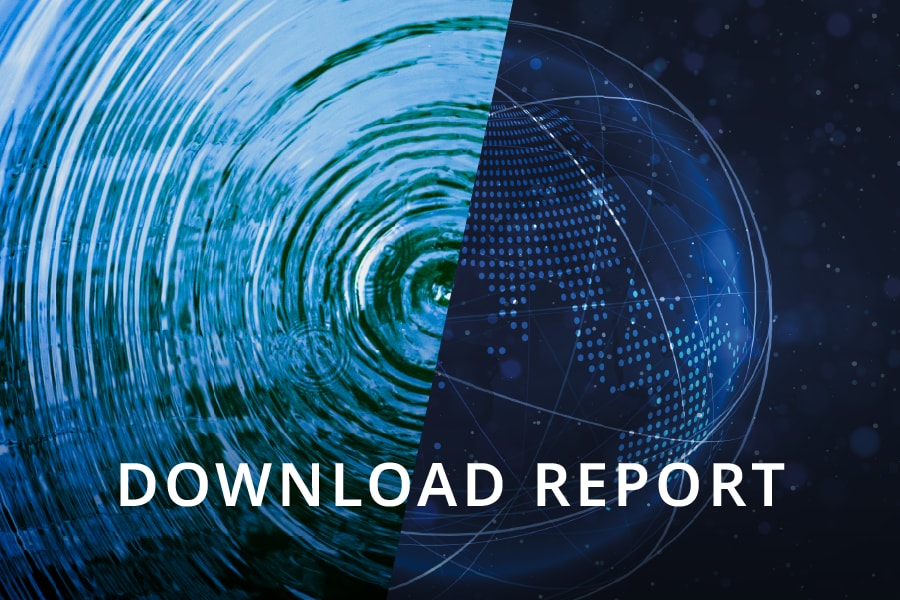Investment Approach
We aim to construct a resilient and forward-looking portfolio to deliver sustainable returns over the long term.
Since our incorporation in 1974, Temasek has transformed from a Singapore holding company into a global investment company. In the 2000s, we stepped out and grew with an emerging Asia, setting up offices in India and China. In the 2010s, we embarked on our strategy to be a global investor and expanded into developed markets such as the US and Europe.
In 2019, we articulated our T2030 strategy to focus on constructing a resilient and forward-looking portfolio — one which is able to withstand exogenous shocks and perform through market cycles, while at the same time capitalising on growth opportunities with the potential for sustainable returns above our risk-adjusted cost of capital over the long term.
Portfolio Composition
Our portfolio is well diversified across geographies and sectors, and comprises three segments:
- Singapore-based Temasek Portfolio Companies (TPCs)
- Global Direct Investments
- Partnerships, Funds, and Asset Management Companies
Portfolio Segments
(as at 31 March 2025)
Singapore-based TPCs
- This segment comprises long-term investments in Singapore-based companies in which we typically hold a minimum shareholding interest of 20%.
- These companies are stalwarts of our portfolio that deliver stable and sustainable returns over the long term and liquidity in the form of dividend income, providing capital for a significant part of our other investment activities.
- They account for 41% of our portfolio value as at 31 March 2025, with a consolidated revenue of over S$150 billion, and employ more than 160,000 people in Singapore.
- Our Singapore-based TPCs include CapitaLand, DBS, Mapletree, PSA, Sembcorp Industries, Singapore Airlines, Singtel, SP Group, and ST Engineering. Almost all of them have expanded regionally in Asia and even beyond to the Americas, Europe, and the Middle East.
Singapore-based Temasek Portfolio Companies by Underlying Country Exposure1 (%)
(as at 31 March 2025)
1 Distribution based on underlying assets.
Global Direct Investments
- This segment makes up 36% of our portfolio value as at 31 March 2025 and primarily consists of equity investment in companies with the potential to be competitive market leaders.
- These investments are aligned to four structural trends:
These trends are interconnected, transcend sectors and countries, and persist through economic cycles.
- Our Global Direct Investments include Adyen, Betashares, BlackRock, Manipal Health Enterprises, Tencent, and VFS Global.
Global Direct Investments by Headquarters (%)
(as at 31 March 2025)
Global Direct Investments by Sector1 (%)
(as at 31 March 2025)
1 Distribution based on underlying assets.
2 The Transportation & Industrials sector includes investments in Energy & Resources.
Partnerships, Funds, and Asset Management Companies
- This segment comprises partnerships with other investors; private equity funds, private credit, and impact investments; and our asset management companies.
- Making up around 23% of our portfolio value as at 31 March 2025, our Partnerships, Funds, and Asset Management Companies allow us to tap on a broad range of opportunities by collaborating with industry leaders to offer and scale capital solutions such as private equity, private credit, public market investments, and tailored financing options.
- Our Partnerships and Funds include our impact investment partnership with LeapFrog Investments and strategic partnerships with Brookfield and Global Infrastructure Partners; as well as a high-quality portfolio of funds diversified across geographies, sectors, and vintages.
- Our Asset Management Companies have over S$90 billion of assets under management as at 31 March 2025. These include third-party capital as well as Temasek’s capital in ABC Impact, Aranda Principal Strategies, Decarbonization Partners, Heliconia, Pavilion Capital, Seviora Holdings, Vertex Holdings, and 65 Equity Partners.
Partnerships, Funds, and Asset Management Companies (%)
(as at 31 March 2025)
Listed and Unlisted
As at 31 March 2025, 51% of our portfolio value was in liquid and listed assets, and 49% was in unlisted assets and funds.
The unlisted portfolio has grown over the years as we invested in attractive opportunities in the private markets and benefitted from the increase in the value of our unlisted assets. This also reflects the trend of private companies staying unlisted for a longer period of time.
We value our unlisted investments at book value less impairment. Our unlisted portfolio, including our private equity co-investments and investments in private equity funds, generated returns of 7% per annum over the last decade and more than 10% per annum over the last two decades. This is higher than the returns generated by our listed portfolio.
Marking our unlisted portfolio to market would provide S$35 billion of value uplift, which is approximately 16% of our unlisted portfolio value as at 31 March 2025.
Unlisted Portfolio (%)
(as at 31 March 2025)
Our portfolio offers us liquidity through divestments, steady dividends from more mature companies, and distributions from the high-quality portfolio of funds we have built up over the years. We also achieve liquidity from our unlisted portfolio through public listings. DoorDash, Dr. Agarwal’s Health Care, Eternal (formerly known as Zomato), Intapp, Medanta, and PB Fintech are some examples of private companies in our portfolio that have listed in the prior five years.
Early-Stage Investments
As at 31 March 2025, our early-stage investments account for about 5% of our total portfolio value, with about half through direct investments and the rest through venture capital funds.
We invest in early-stage companies to keep abreast of the latest technologies and innovations, to drive portfolio development efforts, and to identify potential winners early.
This is driven primarily by our Emerging Technologies and Innovation teams. In addition, our early-stage exposure also includes our venture capital platform (Vertex Holdings) and two venture debt platforms (EvolutionX Debt Capital and InnoVen Capital) that we seeded and built.
We also engage closely with portfolio companies on their efforts to assess potential disruption risks and to identify transformation opportunities arising from new technologies.
We are cognisant of the risks and challenges these early-stage companies face and accept the binary risks that come with investing in them. However, some of these companies also have the potential to achieve significant growth over time and deliver outsized returns.
We manage our early-stage risk through appropriate sizing and diversification. We typically invest smaller amounts at the time of initial investment, with a view to increasing our stake if the company demonstrates successful business execution. In addition, we cap our exposure to this segment at 6% of our overall portfolio value as part of our risk management framework.
Integrating ESG Across Our Investments
We apply an Environmental, Social, and Governance (ESG) framework across our entire investment process to strengthen portfolio resilience and achieve sustainable returns over the long term. This includes investment due diligence to ensure that the opportunities we consider align with our objectives for good governance and sustainability. Post-investment, we engage investee companies to advance sustainability practices, including strengthening climate targets and transition plans, promoting workplace health and safety as well as inclusive workplaces, and fostering good governance.
Investment Framework and Risk-Adjusted Cost of Capital (RACOC)
Our investment discipline is centred around intrinsic value and our risk-return framework. This framework forms the basis of our investment decisions, capital allocation, performance measurement, and incentive system.
When we invest in companies, we conduct a bottom-up intrinsic fundamental valuation analysis and due diligence. We determine a company's fair value using an appropriate discount rate. We also estimate stress case valuations to help us gauge the degree of variability in potential future returns under different assumptions.
We compare our estimate of fair value with current market valuation to determine if an investment makes sense at the proposed price.
We also apply an internal carbon price of US$65 per tonne of carbon dioxide equivalent (tCO2e) to each investment to better assess the potential climate transition impact, thereby enabling a greater focus on the long-term climate resilience of our portfolio. We expect to progressively increase this to US$100 per tCO2e by 2030.
Each investment is assigned a RACOC that takes into account the investment’s overall risk characteristics such as industry risk and capital structure. Investments with greater risk will have higher costs of capital.
We assess our performance by measuring our Total Shareholder Return against our overall RACOC, which is the weighted average RACOC across all our individual investments.
S$ Total Shareholder Return Relative to Risk-Adjusted Cost of Capital (%)
(as at 31 March 2025)
1 TSR by market value takes into account changes in the market value of our portfolio, dividends we paid, and nets off any new investments made by our shareholder in Temasek’s shares.
2 Our risk-adjusted cost of capital accounts for different risks faced by our investments, and is derived using a capital asset pricing model. The risk-adjusted cost of capital is built bottom-up, and aggregated across all our investments.
3 TSR by shareholder equity takes into account the underlying profitability of our portfolio companies, realised returns from our investment activities, dividends we paid, and nets off any new investments made by our shareholder in Temasek’s shares.
S$ Total Shareholder Return Relative to Market Indices1 (%)
(as at 31 March 2025)
1 Temasek’s mandate is to deliver sustainable returns over the long term. These market indices are broad indices, including a wide range of stocks across different countries and industry sectors. The allocations of the indices across sectors and countries are typically based on the market capitalisation of listed stocks, and it is more commonly used for passive investing through Exchange-Traded Funds (commonly known as ETFs). Temasek’s portfolio composition is very different from these indices, especially as Temasek’s portfolio includes a proportion of unlisted assets.
However, market indices provide useful broad reference points as to how the overall market had moved over time. Temasek has set out our performance against various indices, where there is a complete dataset available, to assist those interested in such comparisons.
2 The FTSE STI Index measures the performance of the top 30 companies listed on the Singapore Exchange.
3 The MSCI AC Asia ex-Japan Index measures the performance of large to mid-sized companies in Asia, excluding Japan.
4 The MSCI ACWI Index measures the performance of large to mid-sized companies in the developed and emerging markets.
Investment Engagement and Stewardship
Amidst the uncertainties in our macro environment, companies must stay agile and laser-focused on honing and executing their strategies to meet a challenging world of disruption, geopolitical risk, and shifting shareholder and stakeholder expectations.
As an investor and owner seeking to achieve sustainable returns over the long term from our portfolio, Temasek stays committed to working with our portfolio companies, their boards, and leadership, to ensure a close alignment between strategy and performance, and returns and rewards. We seek to add value to our investee companies — where appropriate, we work together with these companies to enhance value through partnerships, innovation, growth strategies, and transformation.
As an engaged shareholder, we proactively promote good governance, ethical business practices, and compliance with applicable laws. We view engagement and voting as key levers that are essential to long-term value creation and formed a dedicated Investment Stewardship team in 2024 to augment that effort. This year, we established a voting policy that formalises our expectations and sets out principles to reinforce the judicious exercise of our rights through voting at shareholder meetings.
Capital Allocation
At the portfolio level, we set a three-year rolling capital allocation and divestment plan that is reviewed by senior management and approved by our Board annually. This plan guides our investment and divestment activities, and liquidity, to maintain a strong balance sheet.
We have full discretion as an owner and investor to reshape and rebalance our investment holdings as the situation warrants. From time to time, we may invest in or divest from selected positions based on our outlook and risk-return appetite. We may take concentrated positions, remain in cash, and/or use derivatives to hedge currency or protect against potential losses of our underlying investments.
Our investments are predominantly in equities. We adopt a long-term view of our investments and are not focused on short-term volatility. We do not have targets for investing by asset class, country, sector, or single name. We manage our liquidity and balance sheet for resilience and investment flexibility.


